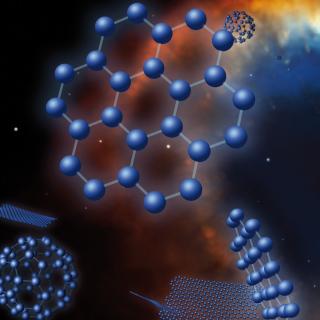Bibcode
Myers, Natalie; Donor, John; Spoo, Taylor; Frinchaboy, Peter M.; Cunha, Katia; Price-Whelan, Adrian M.; Majewski, Steven R.; Beaton, Rachael L.; Zasowski, Gail; O'Connell, Julia; Ray, Amy E.; Bizyaev, Dmitry; Chiappini, Cristina; García-Hernández, D. A.; Geisler, Doug; Jönsson, Henrik; Lane, Richard R.; Longa-Peña, Penélope; Minchev, Ivan; Minniti, Dante; Nitschelm, Christian; Roman-Lopes, A.
Referencia bibliográfica
The Astronomical Journal
Fecha de publicación:
9
2022
Número de citas
39
Número de citas referidas
32
Descripción
The goal of the Open Cluster Chemical Abundances and Mapping (OCCAM) survey is to constrain key Galactic dynamic and chemical evolution parameters by the construction and analysis of a large, comprehensive, uniform data set of infrared spectra for stars in hundreds of open clusters. This sixth contribution from the OCCAM survey presents analysis of SDSS/APOGEE Data Release 17 (DR17) results for a sample of stars in 150 open clusters, 94 of which we designate to be "high-quality" based on the appearance of their color-magnitude diagram. We find the APOGEE DR17-derived [Fe/H] values to be in good agreement with those from previous high-resolution spectroscopic open cluster abundance studies. Using a subset of the high-quality sample, the Galactic abundance gradients were measured for 16 chemical elements, including [Fe/H], for both Galactocentric radius (R GC) and guiding center radius (R guide). We find an overall Galactic [Fe/H] versus R GC gradient of -0.073 ± 0.002 dex kpc-1 over the range of 6 > R GC < 11.5 kpc, and a similar gradient is found for [Fe/H] versus R guide. Significant Galactic abundance gradients are also noted for O, Mg, S, Ca, Mn, Na, Al, K, and Ce. Our large sample additionally allows us to explore the evolution of the gradients in four age bins for the remaining 15 elements.
Proyectos relacionados

Nucleosíntesis y procesos moleculares en los últimos estados de la evolución estelar
Las estrellas de masa baja e intermedia (M < 8 masas solares, Ms) representan la mayoría de estrellas en el Cosmos y terminan sus vidas en la Rama Asintótica de las Gigantes (AGB) - justo antes de formar Nebulosas Planetarias (NPs) - cuando experimentan procesos nucleosintéticos y moleculares complejos. Las estrellas AGB son importantes
Domingo Aníbal
García Hernández